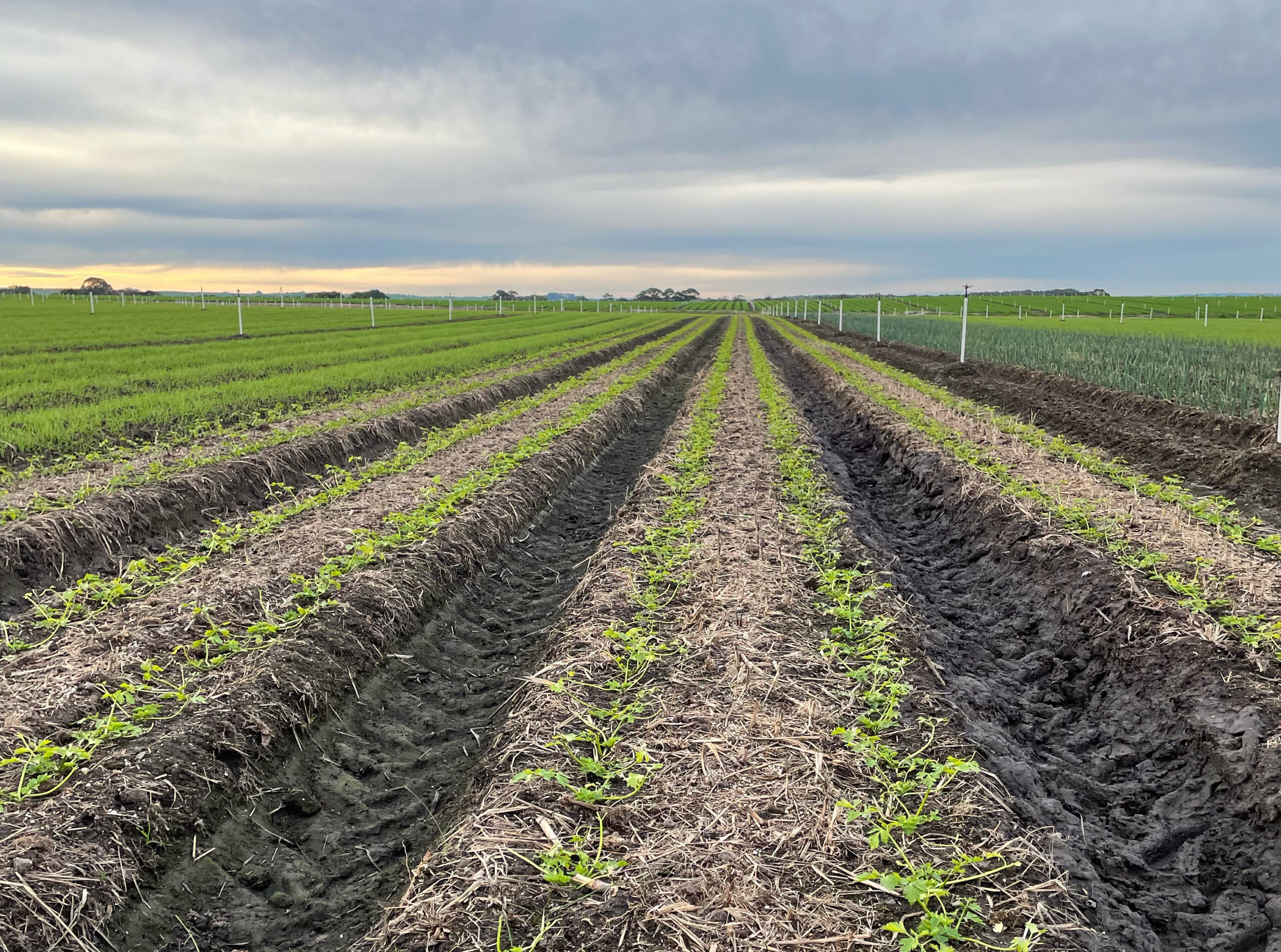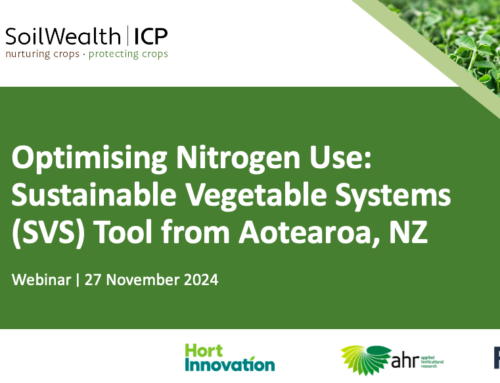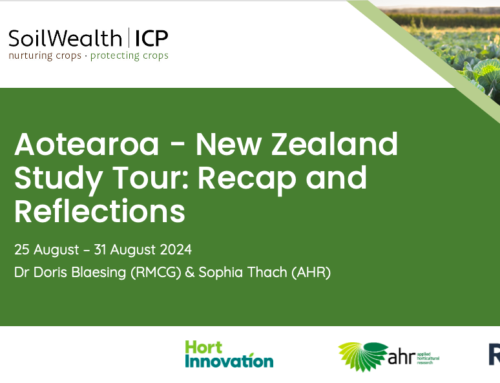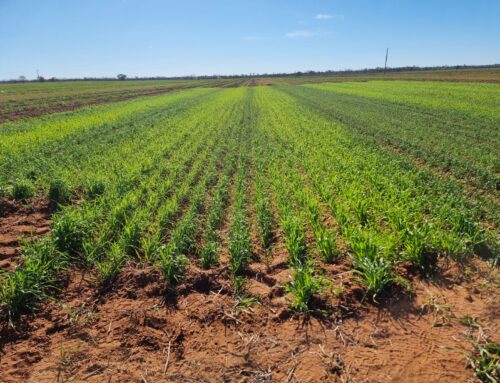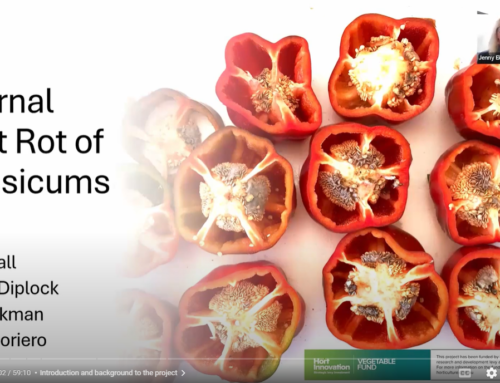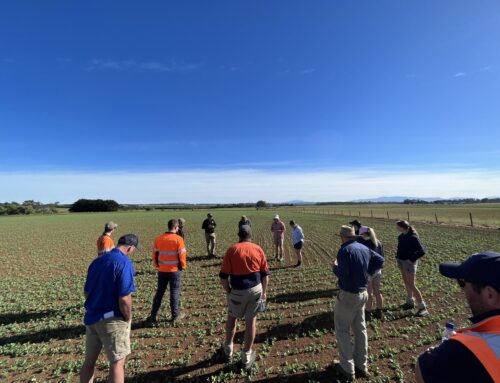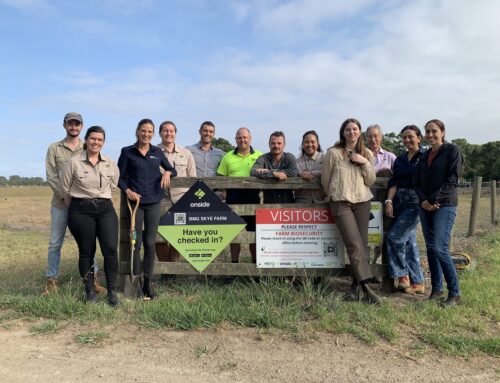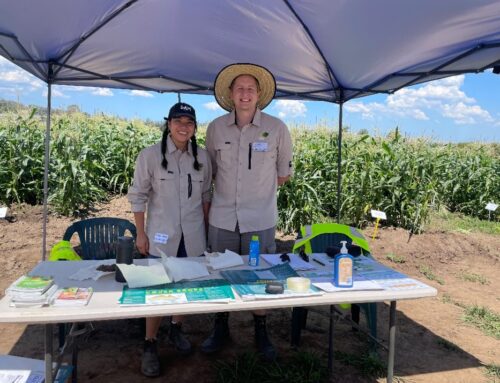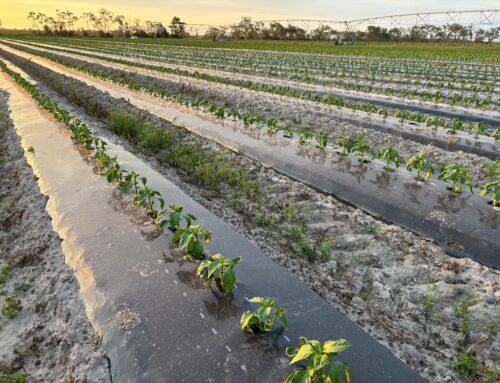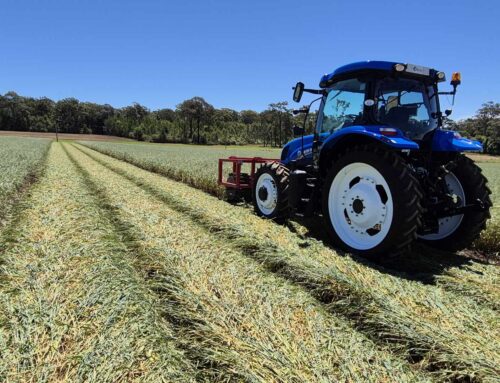Vegetable growers can maintain or build soil carbon to improve soil health, crop resilience and productivity, and reduce greenhouse gas emissions. High organic carbon levels are associated with higher soil microbial populations, good nutrient holding capacity and nutritional cycling ability.
Our Tarwin demonstration site in South Gippsland, Victoria aims to maintain soil carbon in a clay loam greenfield site which is gradually being converted from pasture to a vegetable production system rotation, predominantly celery, spinach and leek.
Carl Larsen from the Soil Wealth ICP team visited the site in late June 2024 to check on the first cash crop growth, as well as capture images and videos for our new virtual demonstration site platform currently under development.
Cultivation – a real carbon killer
In late March 2024, our tests showed very good labile carbon in the areas with the warm season cover crops (Japanese millet, buckwheat-vetch mix and sorghum) combined with minimum till. Labile carbon is the carbon most readily available as a carbon and energy source to microorganisms.
“Without soil carbon there the soil is dead to me. It’s just so important to grow. We’ve seen areas where our soil carbon is depleted and things struggle to grow,” host grower Adam Schreurs said.
The cover crops were terminated from late February to early March, with the first cash crop of celery and leeks planted in early May 2024. Some of the minimum till treatments trialled the use of new strip tillage equipment to maintain cover crop trash and ground cover (Figure 1).
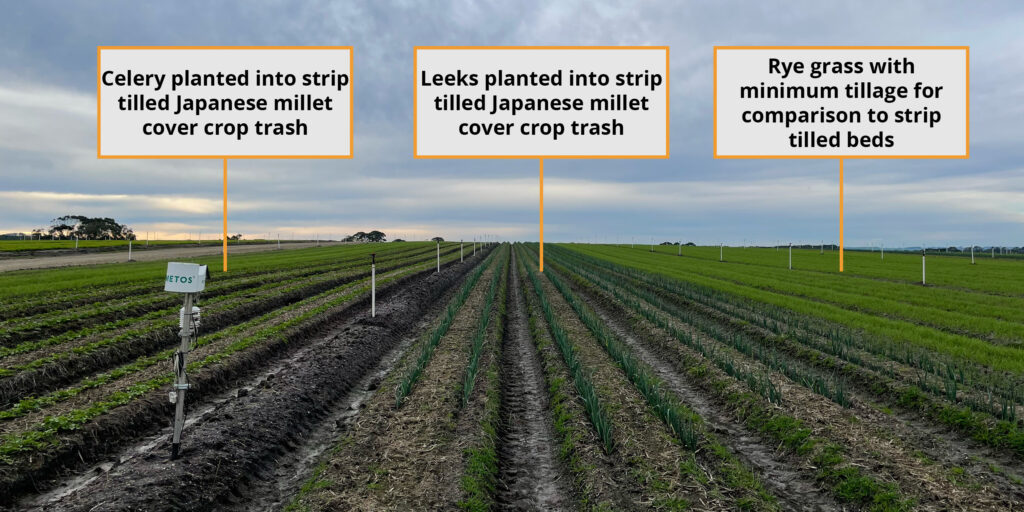
Figure 1: Crop growth comparison after two months
“You can really see the difference in bed stability between the minimum tillage and conventional tillage. We’ve had a lot of recent heavy rain and the beds that were conventionally tilled [in the control] are slumping in some areas,” Adam noticed.
These trial areas had better soil structure and crop growth after two months to late June 2024 compared to the control areas too, which was shown by visual inspection of soil pits, rooting depth and remaining cover crop biomass (Figure 2). This is promising with the planned harvest in late September when we’ll take more detailed yield assessments.
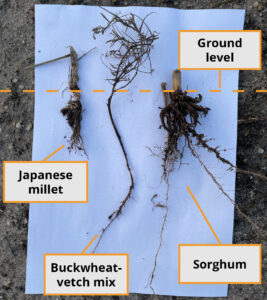
Figure 2: Cover crop biomass 3-months after termination
Innovation in action: Drones, 360-degree cameras & 3D modelling
We understand that travelling to farm walks and finding the right information can be difficult – we all have limited time. That’s why we’re piloting our first virtual demonstration site at Tarwin.
The farm walks and trial results – photos, videos, charts, figures, articles – will shortly be hosted on the AgriKnow platform. This platform:
- Collates results and updates on research trials throughout the season
- Uses cutting edge technology to immerse growers and industry members in research and extension by capturing trial sites in virtual tours, 3D interactive models, 360 degree drone footage and virtual reality (VR) headsets
- Brings field trials direct to growers and industry, allowing them to keep update to date at their own pace whether they’re in the tractor or office.
This will improve access and engagement by growers and industry members in Soil Wealth ICP demonstration sites results and events. We’ve partnered with Frontier Farming Systems, who this week were capturing the images and videos to build the virtual demonstration site online over the coming months.
One of the many pieces of technology deployed on site was a drone that simultaneously captured Normalised Difference Vegetation Index (NDVI) and red, green, and blue wavelength (RGB) images to assess crop uniformity, as well as build the site model (Figure 3).
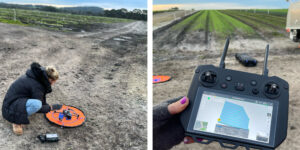
Figure 3: Drone ready for take-off (left) and capturing NDVI and RGB imagery (right)
Where to next? Further information
Stay tuned for the release of our new case study containing the Year 1 results from the site.
In the meantime, you can watch our demonstration site video below.

